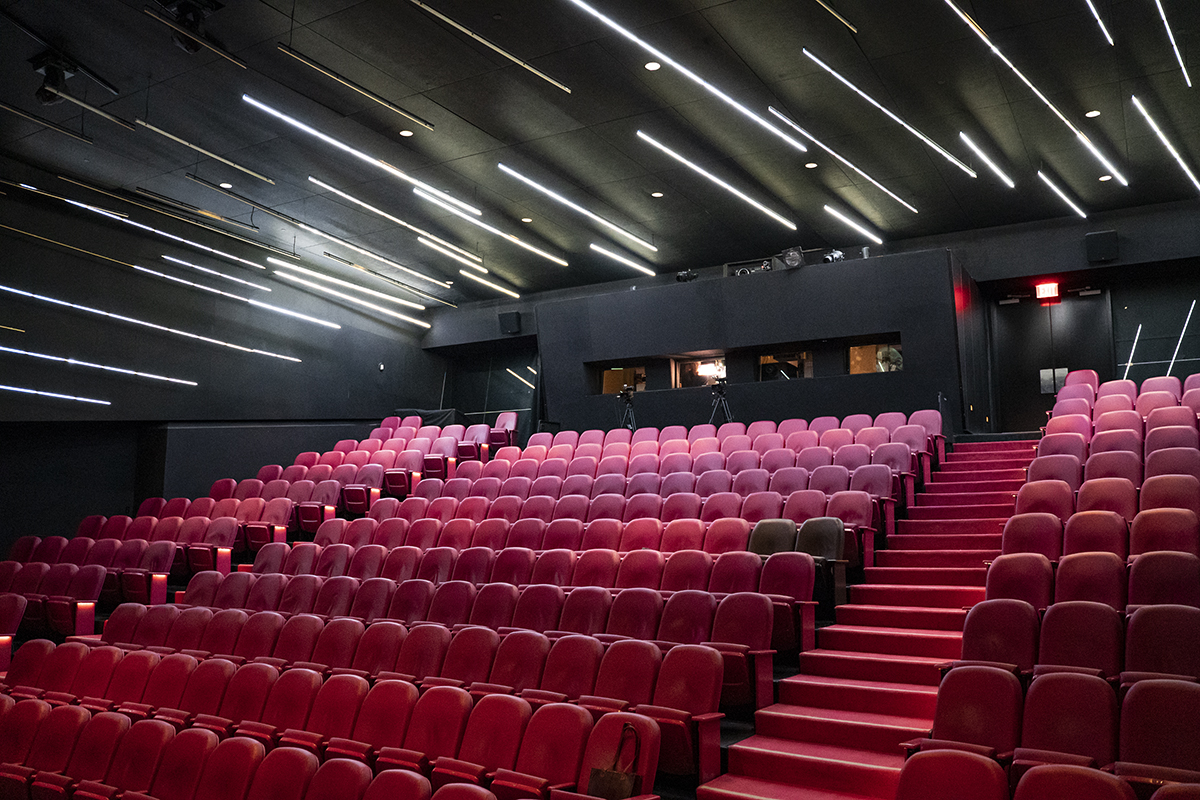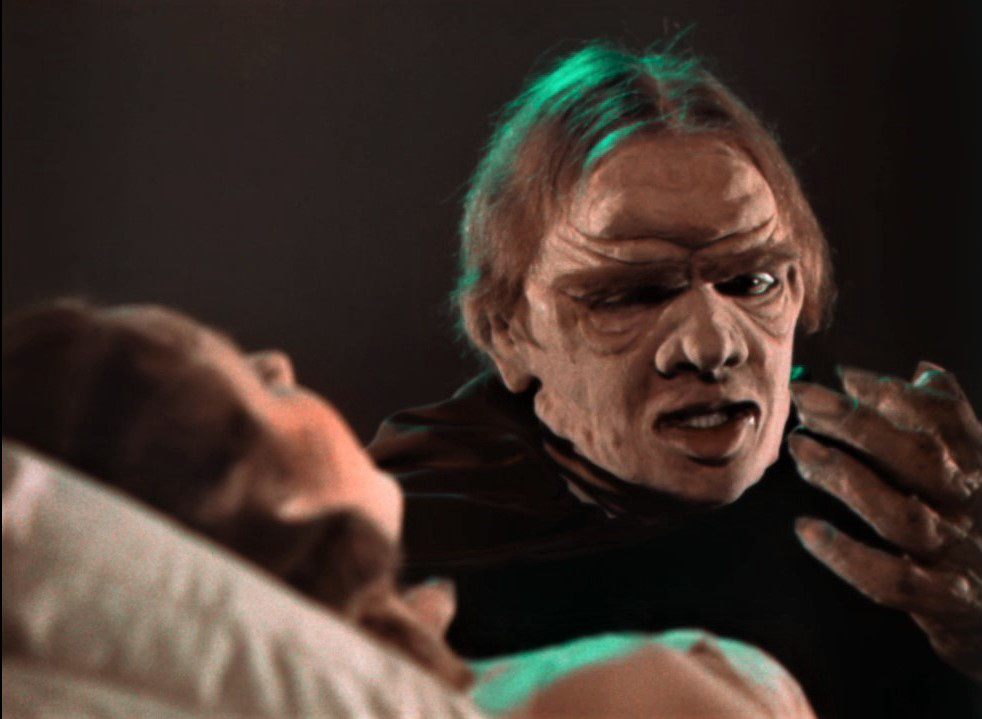UCLA Film & Television Archive to hold in-person screening of restored horror films

The UCLA Film & Television Archive will be holding its first in-person screening of the year Friday, showing “Doctor X” and “Mystery of the Wax Museum. (Nina Morasky/Daily Bruin)
"Mystery of the Wax Museum" / "Doctor X"
Friday
Billy Wilder Theater
Free
By Paria Honardoust
Nov. 9, 2021 10:05 p.m.
This post was updated Nov. 10 at 3:58 p.m.
Recently restored and resurrected, Hollywood’s classic horror films are making a scream-inducing comeback.
On Friday, the UCLA Film & Television Archive is screening the restored versions of two of the earliest horror films from Warner Bros., “Doctor X” and “Mystery of the Wax Museum,” at the Billy Wilder Theater, both of which were directed by Michael Curtiz and star actress Fay Wray. The event marks the reopening of in-person screenings following the all-virtual format during the COVID-19 pandemic. Alan K. Rode, a film preservationist and author of “Michael Curtiz: A Life in Film,” will be making an appearance to introduce the films and initiate the night.
“Both of these restoration projects of these films that are almost 90 years old were really incredible – it was a true restoration,” Rode said. “This wasn’t like, ‘Let’s scan a negative and then call it a restoration and put it out on Blu-ray.'”
The tedious restoration of “Mystery of the Wax Museum” is attributed to the many splices and scratches that had been inflicted on the 90-year-old film, Rode said, thus requiring extensive digital cleanup. A nitrate print copy of the film was originally discovered in 1969, more than 30 years after the 1933 film’s release, and another copy was rediscovered in the 2000s from a collector. Warner Bros. Motion Picture Imaging and The Archive collaborated to scan the nitrate prints, restore sound and embed missing frames, Rode said.
[Related: Documentary captures humanity, resilience of LGBTQ+ motherhood experience]
“Doctor X” underwent similar processes and was recently restored in 2020, several decades after the nitrate print was discovered in the 1980s. Rode said the film received meticulous analog restoration with the rerecording of the sound. The resulting alterations revitalized the film, allowing for a newfound generational appreciation of the ’30s classic, he said.

“Now, you can hear Lionel Atwill’s wheelchair squeaking,” Rode said. “You can hear the morgue monster when he’s crawling around the morgue with a horrific face.”
Both of the Hollywood two-color Technicolor features are recognized as setting an early precedent for subsequent horror films, Rode said. For him, Curtiz’s “Doctor X” and “Mystery of the Wax Museum” are the Rosetta Stones of horror films, as Rode said he believes they encapsulate the director’s early work and Hollywood amid the Great Depression. Curtiz’s films served as a form of escapism for audiences who were otherwise engulfed by external struggle. He was also responsible for establishing the early style and brand of Warner Bros. as the new studio was beginning to paint its narrative, Rode said.
“Mystery of the Wax Museum” and “Doctor X” have similar casts and crew, but actress Fay Wray was specifically recast by Curtiz for her reliability and likability on screen, Wray’s daughter Victoria Riskin said. Riskin, author of memoir and dual biography “Fay Wray and Robert Riskin: A Hollywood Memoir,” said her mother’s roles were appealing to the public because of the familiarity she offered to audiences during difficult times. Similar to Curtiz, Wray adopted a sense of responsibility to comfort the American public during the Great Depression, Riskin said.
“She was like the girl next door,” Riskin said. “She had an innocent sensuality and an earnestness that was appealing. To place her in the middle of these films would just add a sparkle and comfort for the public.”
[Related: Holiday pays homage to silent films, sheds light on impact of genre]
In the early days of cinema, Riskin said the ’30s marked a creative period as the young medium was advancing in visual excitement, and she believes younger generations may appreciate the innovation evident in both films. In spite of the inventive ’30s, Riskin said her mother was accustomed to the degraded nature of early film and would be stunned to see her restored films today.
“She really appreciated the technology of filmmaking and was sensitive to what they (the filmmakers) were trying to accomplish,” Riskin said. “I’m sure this would have been a great source of pleasure for her.”
Though the screening will be in person, The Archive director May Hong HaDuong said virtual screenings received international attention, mobilizing an online demographic. During the pandemic, HaDuong said virtual screenings catalyzed a shift in cinema-viewing culture, sparking the rise of hybrid screenings this year at The Archive. However, she said film and moving images thrive on big screens where they can be enjoyed by the masses. Consequently, she said The Archive intends to host more hybrid screenings to appeal to viewers at home as well as COVID-19-friendly in-person screenings.
As The Archive continues to preserve films, HaDuong said the preservation team aspires to respect and enhance films rather than displace them, which is a significant piece of the restoration puzzle. The accompanying piece is the space in which films are shown, and so The Archive is eager to be back in person, she said.
“Archiving is like time travel, and it allows people to enter a world that either reflects their own realities or introduces them to new ones,” HaDuong said. “They’re an opportunity for new audiences … to really find space to be away from their phones, to be away from their lives in a way that still connects them with art and culture.”

